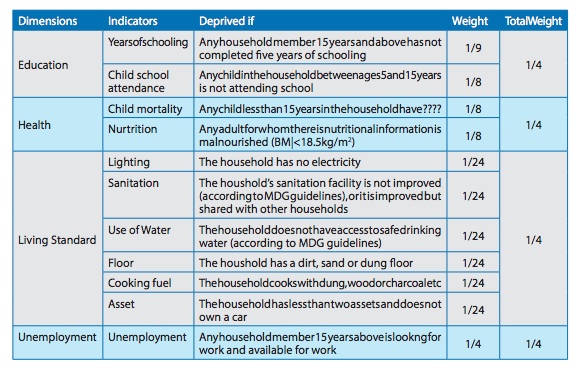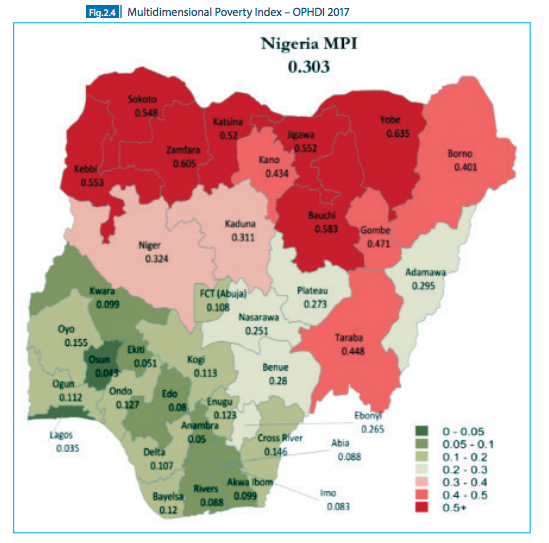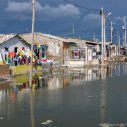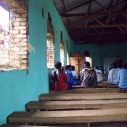
Search
National Multidimensional Poverty Index for Nigeria

The National Multidimensional Poverty Index for Nigeria (NG-MPI) was published as part of the National Human Development Report 2018 focusing on advancing development in North East Nigeria. It was commissioned by UNDP Nigeria in collaboration with the National Bureau of Statistics (NBS).
The national MPI for Nigeria has a total of 11 indicators covering the 4 equally weighted dimensions of Education, Health, Living Standards and Unemployment. The NG-MPI was computed at sub-national level using data from the 2017 Human Development Indices Survey and covered rural and urban areas in all of the 36 states and the Federal Capital Territory (FCT) of Abuja.
For calculating the NG-MPI, a household is considered multidimensionally poor if it is deprived in more than ¼ of the weighted indicators. For Nigeria, the share of multidimensionally poor people at the national level is 54% with the average intensity of deprivation standing at 42%. The indicators with the largest weighted contribution to poverty in the country are employment, years of schooling and school attendance.
The results from the NG-MPI show a high incidence of poverty across the North with the poorest states having over 80% of their population classified as multidimensionally poor
The NG-MPI’s main focus was sub-national analysis and the report features results akin to the findings of the 2018 Global MPI, with both reports presenting stark differences in poverty levels between northern Nigeria and the rest of the country. The results from the NG-MPI show a high incidence of poverty across the North with the poorest states having over 80% of their population classified as multidimensionally poor. The intensity of deprivation in the region is above 40% for most states which means that the average household in these areas is deprived in just under half of the indicators. This is in stark contrast with the southern part of the country, especially the South West, where both the incidence and intensity of poverty is much lower.
The MPI accounts for both the incidence and intensity of poverty and its value ranges from zero to one. The MPI score shows the proportion of deprivation people in a given country experience out of the total possible deprivations where everyone was poor and deprived in all indicators. According to the NG-MPI, Nigeria’s poorest states are Sokoto, Jigawe and Yobe in the North, with MPI scores between 0.35 and 0.45, while the least poor states are found in the South Western part of the country with MPI scores ranging from 0.06 to 0.12.
Source of data: 2017 Human Development Indices Survey. The survey covered households in both urban and rural areas in all the 36 states of the Federation and the Federal Capital Territory (FCT), Abuja using the Enumeration Areas (EAs), which established through the National Integrated Survey of Households (NISH). A total sample 120 Enumeration Areas (EAs) were selected in each of the 36 states, and the FCT. In each EA, a sample of 15 households (HHs) was selected for the study, making a total of 1,800 households per State and a national sample size of 66,600 households.
Information on the Nigeria – MPI is available in the Nigeria – Human Development Report (pages 21 -23, 78 – 82, 85).


















